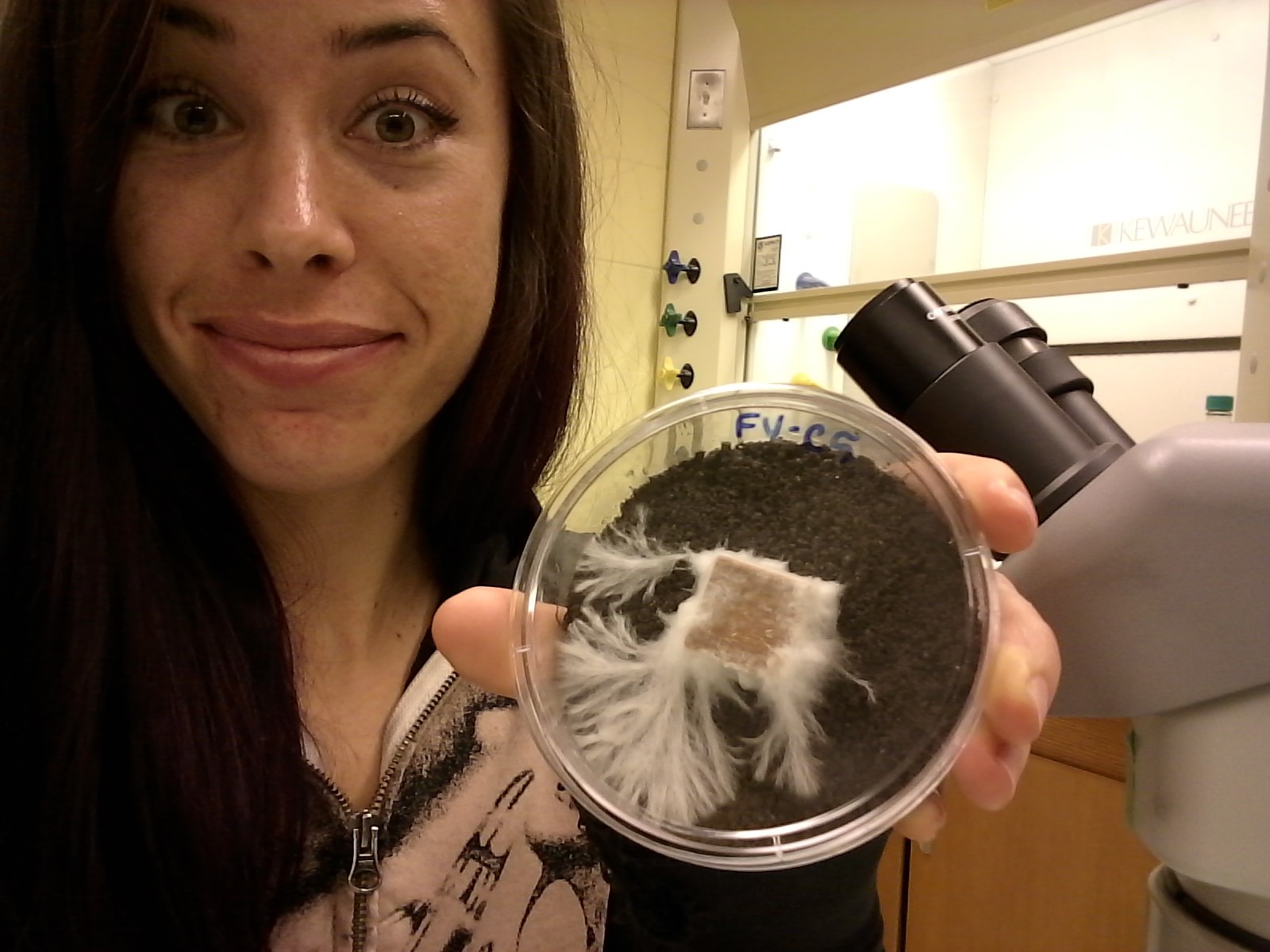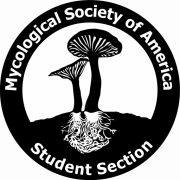
Andi Bruce is from Santa Ana, California. She received her BA in Environmental Studies (Environmental Sustainability and Social Justice concentration) at San Francisco State University. Currently she is working toward a Master’s in Biology at the University of Wisconsin-La Crosse in the labs of Todd Osmundson and Tom Volk. Andi is researching the synergistic effects between fungi with different decay strategies to increase the effectiveness of mycoremediation of diesel-contaminated soil. Her experiments involve the co-inoculation of the brown rot Fibroporia vaillantii and the white rot Stropharia rugosoannulata in non-sterile, diesel-spiked soil.
How did you become a mycologist?
While traveling in Australia in 2012, I wound up couch-surfing with an amateur mycologist, who introduced me to the weird and wonderful world of fungi. When I returned stateside, I stumbled upon a copy of Mycelium Running, which brought everything full circle for me! My undergraduate work revolved around environmental sustainability and social justice, and I found the low-cost, low-tech potential for fungi in environmental remediation very exciting! I started volunteering in a mycology lab (thank you Mia Maltz and Kathleen Treseder!), where I got involved in a few different mycology projects, and even took the lead on a small project of my own. The lab skills and techniques I learned there were instrumental in my acceptance into grad school about a year later.
Who is your mycology role model?
I have a few! I am inspired by Lynne Boddy as a pioneer in the areas of fungal interactions and community structure, and as a charismatic champion of mycological education and outreach. I also look up to my primary advisor, Todd Osmundson, an endlessly patient educator with incredible fungal genetics savvy. Tom Volk is another; he pushes students to be themselves and trust themselves in ways that lead them to accomplish greatness both in and outside academia. Lastly, Mia Maltz inspires me as a natural born leader and community organizer, dedicated to bringing mycology education and applications to people and places that need it.
What is your favorite fungus, and what do you like about it?
Chlorociboria aeruginascens is one of my favorites. The blue-green stain it leaves on wood is so beautiful! It doesn’t fruit very frequently, so it’s exciting to find its fruiting bodies in nature.
What is your favorite fact about fungi?
I like pointing out to people that fungi are our biggest competitors for food. Most people think of mold as something that just happens to your food if you wait too long; few consider that it’s a living organism that we go to great lengths to compete against (and often fail). Ultimately, I think my favorite thing about fungi is that they are such unsung heroes. They are critically important to the ongoing transformation of this earth into an inhabitable environment in about a million different ways, and most people have no idea.
Do you have any funny or interesting stories about field work?
I collected soil to culture fungi from an experimental revegetation site in southern California, which ran along a 1300-ft ridge. There was always an upward air current along the ridge that caused crows gather en masse for coasting. It was amazing and bizarre to walk along the ridge with a murder of crows suspended in the air at eye level. The way the crows appeared so stationary in the air reminded me of those movie scenes where a character pauses reality and walks through a scene that is suspended in time.
What do you like to do in your free time? What are your hobbies?
I love to travel; after I finished my undergrad, I spent almost 2 years traveling the world by myself. I spend a lot of time outdoors hiking, camping, cycling, canoeing, snowshoeing, or rock climbing. I also recently started doing stand-up comedy as a hobby.


Leave a Reply